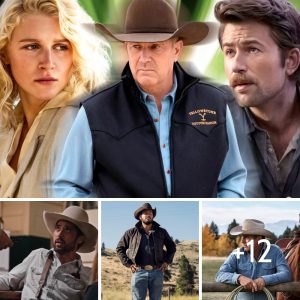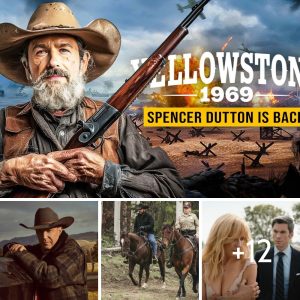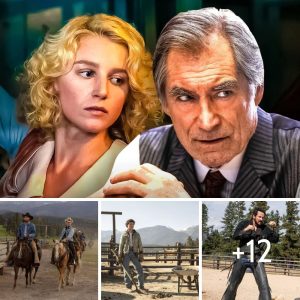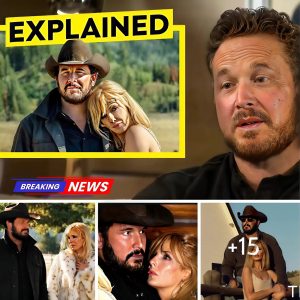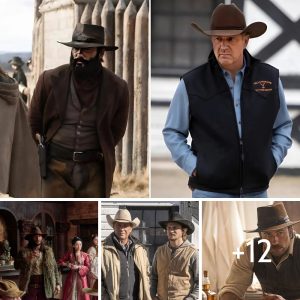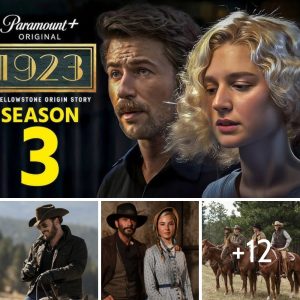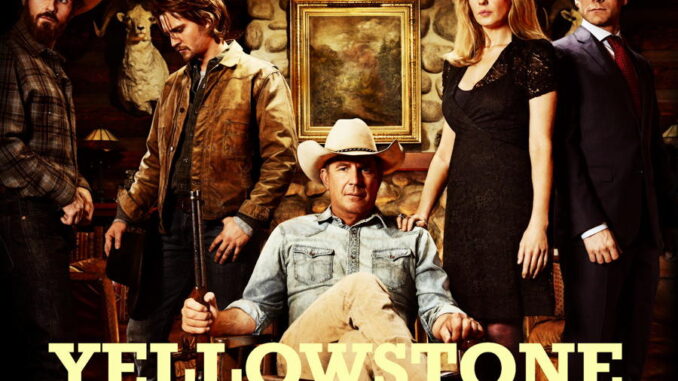
The Dust and Diamonds: Yellowstone’s Unveiled Backstage Symphony
The world of Yellowstone, with its sweeping vistas, visceral conflicts, and the rugged poetry of the American West, has captivated millions. We watch, enthralled, as the Dutton dynasty navigates treacherous landscapes, both literal and emotional. Yet, the grandeur we behold on screen is but a polished facet of a far more complex, often arduous, creation. When the cast of this monumental series steps out of character and shares their behind-the-scenes revelations, they don’t merely offer gossip; they pull back the curtain on the human spirit, the artistic commitment, and the sheer grit required to forge such a compelling universe. These “secrets” transform our understanding of the show, making the fiction feel more tangible, the characters more deeply etched, and the artistic endeavor all the more profound.
One of the most recurring themes in the cast’s confidences is the unflinching reality of the Western lifestyle they portray. Cole Hauser, whose portrayal of Rip Wheeler embodies stoic masculinity, has often spoken about the intensive riding and ranch work required. It’s not just about sitting on a horse; it’s about living it. He once recounted a scene filmed in a genuine blizzard, where the wind nearly ripped the cameras from their moorings and the horses, unscripted, huddled together for warmth. “You can’t fake that,” he reportedly mused, a cloud of visible breath escaping his lips. “That cold, that wind – it puts the rawness right into you, and that goes into Rip.” Similarly, Kelly Reilly, the brilliant architect of Beth Dutton’s barbed-wire cadence, admitted her initial apprehension about riding. Her journey from novice to competent equestrian, spurred by hours in the saddle before dawn, isn’t just a personal anecdote; it’s a testament to the cast’s collective dedication to authenticity, ensuring that every rope thrown, every gallop across the plains, resonates with lived truth rather than studio artifice. These aren’t CGI cowboys; they are actors who bleed for their craft.
Beyond the physical demands, the cast’s revelations often delve into the intricate psychological landscapes they inhabit and the profound emotional toll it takes. Wes Bentley, who masterfully portrays the tormented Jamie Dutton, once described the challenge of shaking off his character’s profound loneliness and self-loathing after a long day of filming. “Jamie’s world is a very dark, isolated place,” he confessed. “Sometimes, you feel that isolation seeping into you. You have to consciously shed it, almost like a second skin, before you go home.” This offers a glimpse into the actors’ disciplined art of emotional compartmentalization. Conversely, Luke Grimes, who plays the morally conflicted Kayce Dutton, has shared moments of unexpected levity on set. He recalled a particularly intense family argument scene that devolved into uncontrollable laughter when a prop cow, seemingly out of nowhere, let out a surprisingly loud moo at a dramatic pause. These moments, where the intensity breaks, reveal the human bonds forged under pressure—a necessary counterpoint to the dramatic weight they carry, preventing them from succumbing to the shadows their characters cast.
Finally, the cast frequently lifts the veil on the intimate, almost familial ecosystem of the production itself. It’s not just a set; it’s a temporary community forged in the crucible of creation. Kevin Costner, the stoic patriarch John Dutton, has often spoken less about his own process and more about the collective spirit. He once noted, “It’s the crew, the wranglers, the teamsters—they’re the unsung heroes. We get the applause, but they’re the ones making sure the sun hits just right, the horses are safe, and the coffee’s hot at 4 AM.” Jefferson White, who embodies the lovable, oft-injured Jimmy Hurdstram, has shared numerous anecdotes about the camaraderie, particularly during his rigorous rodeo training. His comical missteps and subsequent triumphs, cheered on by his fellow cast members and the crew, illustrate a supportive, nurturing environment rarely seen in such high-stakes productions. These intimate glimpses underscore that the magic of Yellowstone is not solely the product of a singular vision or a star performance, but the confluence of hundreds of dedicated individuals, working in harmony to manifest Taylor Sheridan’s sprawling vision.
In essence, the “secrets” revealed by the Yellowstone cast are not scandalous exposes but rather precious insights into the heart of dramatic artistry. They tell us that the dust on Rip’s boots is real, the tears in Beth’s eyes are drawn from genuine emotional depths, and the sweeping grandeur of the landscape is a challenge embraced by a committed team. These revelations don’t just deepen our appreciation for the show’s meticulously crafted narrative; they transform our viewing experience into a more engaged, knowing one. We no longer just watch the Duttons; we feel the wind they brave, understand the weight they carry, and recognize the incredible human effort that brings their complex, wild world roaring to life. The fictional myth of Yellowstone becomes, through the cast’s candid confessions, a tangible testament to the enduring power of human dedication.
